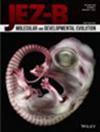Exploring the Influence of Neomorphic Gekkotan Paraphalanges on Limb Modularity and Integration
Abstract
Digital specializations of geckos are widely associated with their climbing abilities. A recurring feature that has independently emerged within the sister families Gekkonidae and Phyllodactylidae is the presence of neomorphic paraphalanges (PPEs), usually paired, paraxial skeletal structures lying adjacent to interphalangeal and metapodial–phalangeal joints. The incorporation of PPEs into gekkotan autopodia has the potential to modify the modularity and integration of the ancestral limb pattern by affecting information flow among skeletal limb parts. Here we explore the influence of PPEs on limb organization using anatomical networks. We modeled the fore- and hindlimbs in species ancestrally devoid of PPEs (Iguana iguana and Gekko gecko) and paraphalanx-bearing species (Hemidactylus mabouia and Uroplatus fimbriatus). To further clarify the impact of PPEs we also expunged PPEs from paraphalanx-bearing network models. We found that PPEs significantly increase modularity, giving rise to tightly integrated sub-modules along the digits, suggesting functional specialization. Species-specific singularities also emerged, such as the trade-off between the presence of PPEs favoring modularity (along the proximodistal axis) and the interdigital webbing favoring integration (across the lateromedial axis) in the limbs of U. fimbriatus. The PPEs are characterized by low connectivity compared with other skeletal elements; nevertheless, this varies based on their specific location and seemingly reflects developmental constraints. Our results also highlight the importance of the fifth metatarsal in generating a shift in lepidosaurian hindlimb polarity that contrasts with the more symmetrical bauplan of tetrapods. Our findings support extensive modification of the autopodial system in association with the addition of the neomorphic and intriguing PPEs.

 求助内容:
求助内容: 应助结果提醒方式:
应助结果提醒方式:


